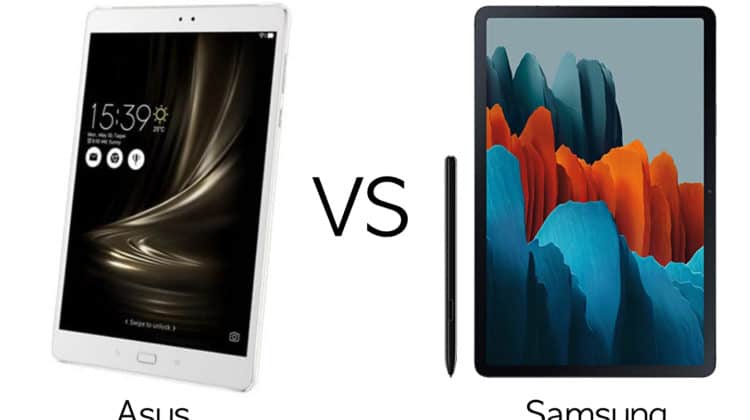
Brands like Samsung and Lenovo have done quite well for themselves in the tablet market and managed to carve a niche with their offerings. As good as both brands are, consumers often find themselves in a dilemma when deciding between Asus vs Samsung tablet.
We understand their dilemma, and that’s why we have come up with this comprehensive Asus vs Samsung tablet comparison guide to help you understand both brands better and make a sound decision.
Let’s start with comparing the specifications of Asus ZenPad 3S 10 and Samsung Galaxy Tab S3.
Asus vs Samsung Tablet: Product Specifications
| Feature | Samsung Galaxy Tab S3 | Asus ZenPad 3S 10 |
|---|---|---|
| Dimensions | 9.34 x 6.65 x 0.24 in | 9.47 x 6.44 x 0.28 in |
| Display | 9.7-inches Super AMOLED screen with 1536 x 2048 pixels resolution | 9.7-inches IPS LCD screen with 1536 x 2048 pixels resolution |
| Processor | Qualcomm MSM8996 Snapdragon 820 | Mediatek MT8176 |
| RAM/Storage | 4GB RAM, 32GB/128GB storage | 4GB RAM, 32GB/64GB storage |
| OS | Android 7.0 upgradable to Android 9.0, One UI | Android 6.0, upgradable to Android 7.0 |
| Weight | 429 g (Wi-Fi)/ 434 g (LTE) | 430 g |
| Battery | 6000 mAh, Fast charging 18W | 5900 mAh, Fast charging 18W & Quick Charge 3.0 |
| Rear Camera | 13MP with LED flash, HDR | 8MP with HDR, panorama |
| Front Camera | 5MP | 5MP |
Asus vs Samsung Tablet: Pros and Cons
Based on our analysis of different tablets from Samsung and Asus, here are some of their greatest strengths and weaknesses.
Asus Tablet
Check out the pros and cons of Asus tablets below:
Pros
- Extended storage space
- Powerful battery performance
- Durable build quality
- Affordable
Cons
- Not great in terms of design
- Bulkier than other similar tablets
- Software performance often lags
- Camera quality is mediocre
Samsung Tablet
Check out the pros and cons of Samsung tablets below:
Pros
- Caters to every price and budget segment
- Premium design and build quality
- Better software performance than other Android tablets
- Extended features like DeX mode on flagship models
- Powerful battery
Cons
- Storage capacity on some models is inadequate
- Lacks 3.5mm headphone jack on select premium range
- Some Lite variants are not optimized for seamless software experience as on mid-range and premium models
Asus vs Samsung Tablet: Features Face to Face
Let’s begin our Asus vs Samsung tablet comparison by putting them side-by-side. The evaluation is based on features and functionalities. Remember, this is a holistic approach towards both the brands, not particular models.
Design & Build Quality
Let’s start with the overall quality of the product’s design and construction. Asus and Samsung are the same in their budget tablet offerings. However, Samsung takes the upper hand in mid-range and flagship offerings. It isn’t wrong to say that Samsung is the closest competitor to iPad when it comes to the design of its flagship tablets.
Asus has a limited play area under budget and mid-range price segments. There are some premium offerings too, but they hardly touch the popularity of Samsung tablets. Of course, both brands’ build quality offered for budget tablets is comparable.
Budget and mid-range tablets from Samsung and Asus feature multiple ports, including 3.5mm headphone, USB- C/microUSB charging, microSD card slot, and more. This is important for buyers to know.
Overall, Asus and Samsung challenge each other head-on in the budget segment. As you go towards mid-range and premium, Samsung takes the clear lead with tablets like the Galaxy Tab S7 and S8 series.
Display
One significant difference that you will notice between Asus vs Samsung tablets is the choice of screen. Usually, Samsung offers a Super AMOLED display on its mid-range and premium models. For example, you get Super AMOLED on a mid-range model like Galaxy Tab S3.
On the other hand, Asus sticks to the LCD screen even though the resolution could go as high as 2048 x 1536 on mid-range offerings like Asus ZenPad 3S 10. Of course, even Samsung sticks to TFT display for its budget offerings like the Tab A7 Lite.
As we concluded for the design, Samsung pulls a similar trick here. Samsung is hands-down better for mid-range and high-end tablets as they come with sophisticated displays.
Performance
Both Samsung and Asus offer decent hardware with their tablets. Still, Asus usually sticks with MediaTek processors on its tablet offerings, while Samsung uses its proprietary Exynos and Snapdragon chipsets. Samsung’s Exynos and Snapdragon chipsets are better on benchmark charts than MediaTek.
Asus does take an edge when it comes to offering higher internal storage on its tablets. An Asus tablet could provide you with double the storage than some Samsung tablet models.
Performance-wise, Samsung tablets are better than Asus tablets thanks to their powerful chipsets. But if you’re looking for higher storage at a lower price, Asus should be your pick.
Software
Asus tablets ship with ZenUI, while Samsung tablets feature OneUI. Both are based on Android. Comparing the two, ZenUI fails to match the snappy performance offered by Samsung’s OneUI. Samsung also includes DeX support for some premium and mid-range tablets that enhance productivity.
ZenUI is not seamless but can still be used for basic tablet expectations. While Samsung’s OneUI can deliver a powerful performance that can handle demanding apps and help with functions like video editing and more.
Camera
On most budget tablets from Asus and Samsung, you can expect up to a 13MP rear camera and 5MP front camera. Although Samsung tablets perform better even on entry-level devices, Asus does not entirely disappoint. You can easily video chat using Asus’s budget tablet, but the lighting has to be good for enhanced performance.
As we head towards the mid-range and premium segment of tablets, Samsung takes the cake with its unmatched performance and high-quality setup enhanced by features. The latest premium offering by Samsung, the Galaxy Tab S8, boasts 13MP + 6MP dual camera setup on the rear with UHD 4K video recording support.
Even in this segment, Samsung tablets perform better than Asus tablets in every price segment. This has to do a lot with the fact that Samsung is already a pioneer in the smartphone segment, which helps them position and design tablets according to the market demands. On the other hand, Asus is better positioned in the laptop/PC segment even though it has been trying to succeed in the smartphone segment for over a decade.
Stylus Support
Select Samsung tablets from the premium and mid-range segments that support its S-Pen stylus while select Asus tablets support Asus Z Stylus. The primary comparison point is that some Galaxy tablets include S-Pen within the box, while Asus users have to buy the stylus separately.
Although one would think that both styluses are different, some of their features are similar. Asus stylus shares some Air Commands from S-Pen. Despite their similarities, S-Pen is far superior to the Asus Z Stylus.
Battery
Battery performance by both Asus and Samsung tablets is decent. But Samsung’s premium tablets also include fast-charging and USB-C support. Also, Samsung’s high-end tablets with AMOLED screens are better optimized for performance and do not drain the battery.
Warranty
Samsung tablets come with a 12-month standard warranty and customer support on chat and calls. Buyers can also opt for Samsung Care+ by paying extra money when buying a new tablet. Asus also offers a 12-month standard warranty and can be reached via chat and call support.
Recommended Asus Tablet
Here are two Asus tablets that we recommend to our readers.
ASUS ZenPad 3S 10
Powering this tablet is a powerful quad-core ARM Cortex-A53 CPU and a dual-core ARM Cortex-A57 processor from MediaTek. It has a 9.7-inch screen with a resolution of 2048 x 1536 pixels. When combined with ASUS TruVivid technology, the result is picture-perfect graphics.
Thanks to Corning Gorilla Glass 3 glass protection, the ZenPad 3S 10 has a sturdy, long-lasting, scratch-resistant screen. An 8MP rear and 5MP PixelMaster front camera are also included. Even in low-light conditions, you’ll be able to take high-quality images and movies with no shutter lag.
The fingerprint sensor on the ZenPad 3S 10 makes it even faster, more convenient, and more secure. It has a battery life of up to 10 hours and a capacity of 5900mAh so that it can keep up with you all day long. Android 6.0 Marshmallow is preinstalled on the device.
The IMG GX6250 graphics, strong processors, 4GB RAM, and 64GB storage capacity make it excellent for gaming. When working, playing games, or playing multimedia content, you can anticipate lag-free performance. In addition, an SD card may be used to enhance its storage capacity to 128GB.
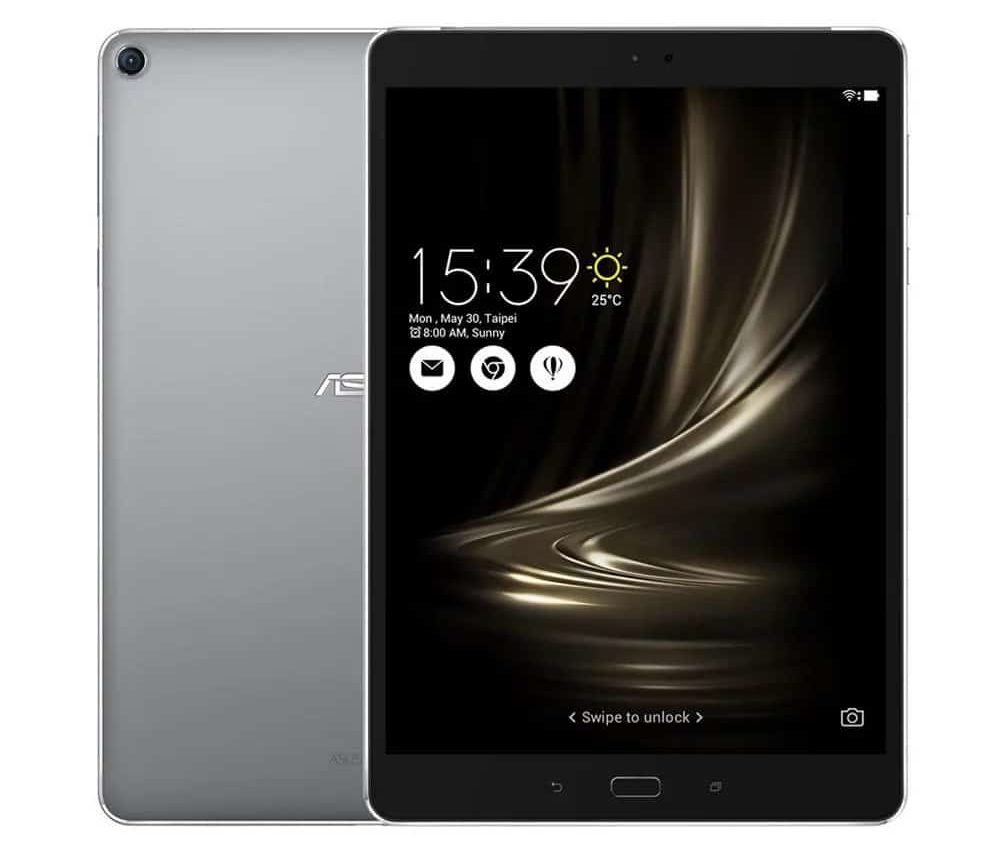
Asus Chromebook Tablet CT100
This model has been developed with military-grade protection features to endure the rigors of daily use. Bumpers made of rubber protect the corners and edges of the device, ensuring the safety of all its components. Because of this, even if the device is bumped or dropped, it will not be damaged by shocks.
The 2048 × 1536P resolution of this 9.7-inch touchscreen device makes it excellent for usage in low-light conditions. A stylus and a pen holder are included, making it even more user-friendly. It runs Chrome OS and has Wi-Fi and Bluetooth connectivity.
The tablet has a battery life of up to 10 hours, and it contains built-in security and auto-update capabilities to keep you safe and secure while increasing productivity. This model is a breeze to transport because of its superb grip and non-scratch surface.
Even while multitasking, a 4GB RAM will enable you to perform at a high level without stuttering. Having a 32GB storage capacity will allow you to carry all of your data at all times.
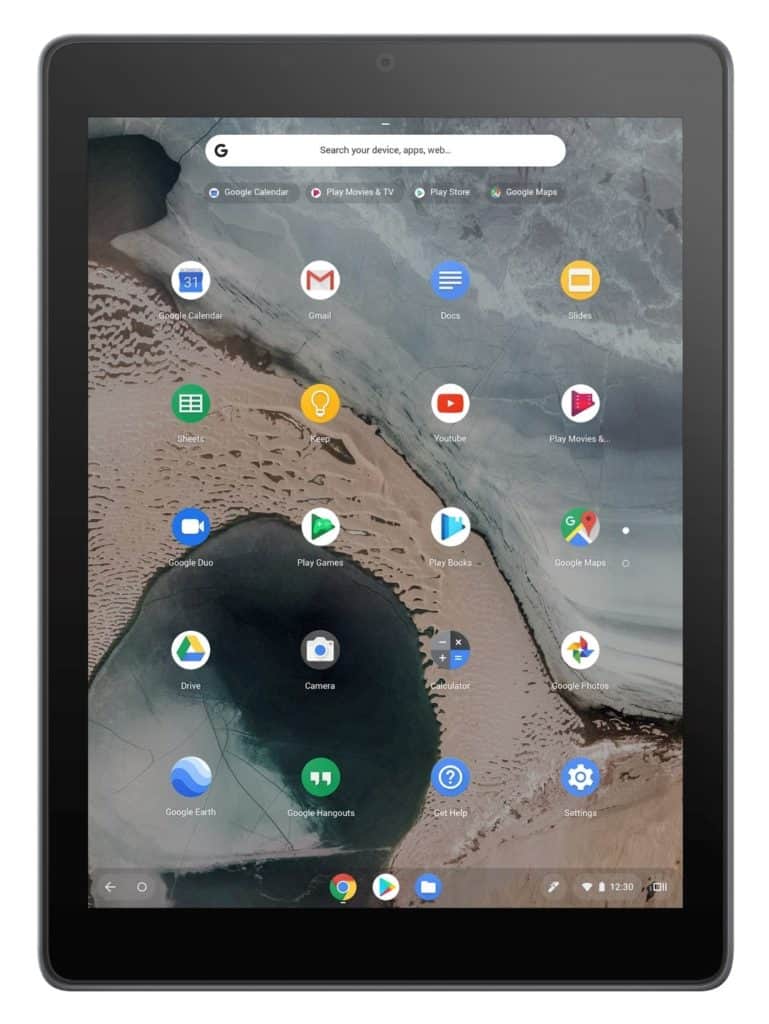
Recommended Samsung Tablet
Here are two Samsung tablets that we recommend to our readers.
Samsung Galaxy Tab S7
You may choose from a wide variety of high-quality Galaxy Tabs, but our top pick is the Galaxy Tab S7. It is still the best Samsung tablet on the market today — and is regularly sold at a discount from its original price.
A tablet’s screen is its most critical component, and the Samsung Galaxy Tab S7 boasts an impressive one. The refresh rate of 120 Hz and 2560×1600 resolution on an 11-inch LCD screen make for a stunning display. As a result, the Tab S7 will look great whether you’re playing many games or watching a bunch of films. In addition, the Snapdragon 865+ chipset and 8GB of RAM will allow you to complete most tasks quickly.
This new version of Samsung’s renowned stylus has a 9ms delay, making it ideal for lifelike sketching and writing on the Tab S7. Mount the S Pen on the tablet’s back while you’re not using it, and magnets will hold it in place.
Overall, the Galaxy Tab S7 is one of the greatest Android tablets on the market. It has enough RAM to play Android games or work in DeX mode reliably. Only if you’re not satisfied with the 11-inch screen of the S7 is it necessary to upgrade to the larger S7+ or S7 FE.
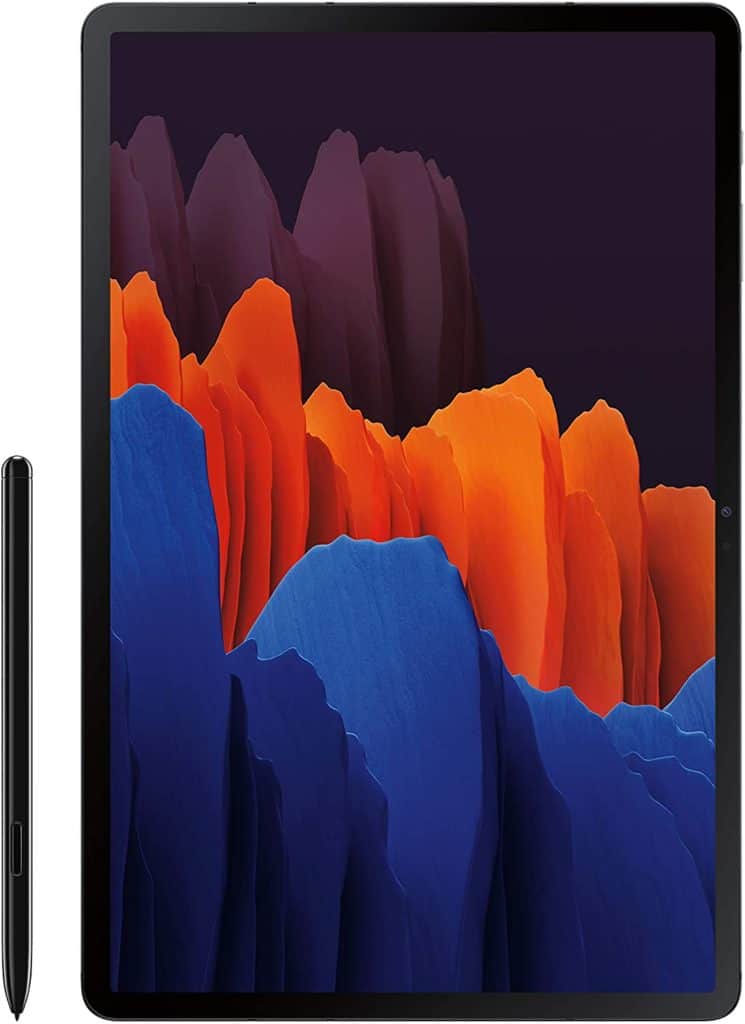
Samsung Galaxy S6 Lite
The Galaxy Tab S6 Lite is one of the most affordable tablets on the market today. There are a few solid points to consider for students looking for an older and compact tablet and a reasonable price in the Tab S6 Lite, which was released in 2020.
S6 Lite’s display has a 2000×1200 resolution on a 10.4-inch LCD panel. It doesn’t matter what app or game you’re using, and owing to the integrated S Pen, you’ll be able to take notes in class. On the other hand, Samsung’s low-cost Galaxy Tab A tablets often lack an S Pen and have HD resolutions.
The S6 Lite’s attractive display is paired with superb stereo speakers and a 3.5mm headphone port, making it an excellent value for the price.
With its Exynos 9611 chipset, Samsung has a lot to answer with the Tab S6 Lite. As a result, you won’t be able to use banking apps that require a fingerprint sensor. However, it’s a good option for students who need a reasonably priced tablet that isn’t too bulky.
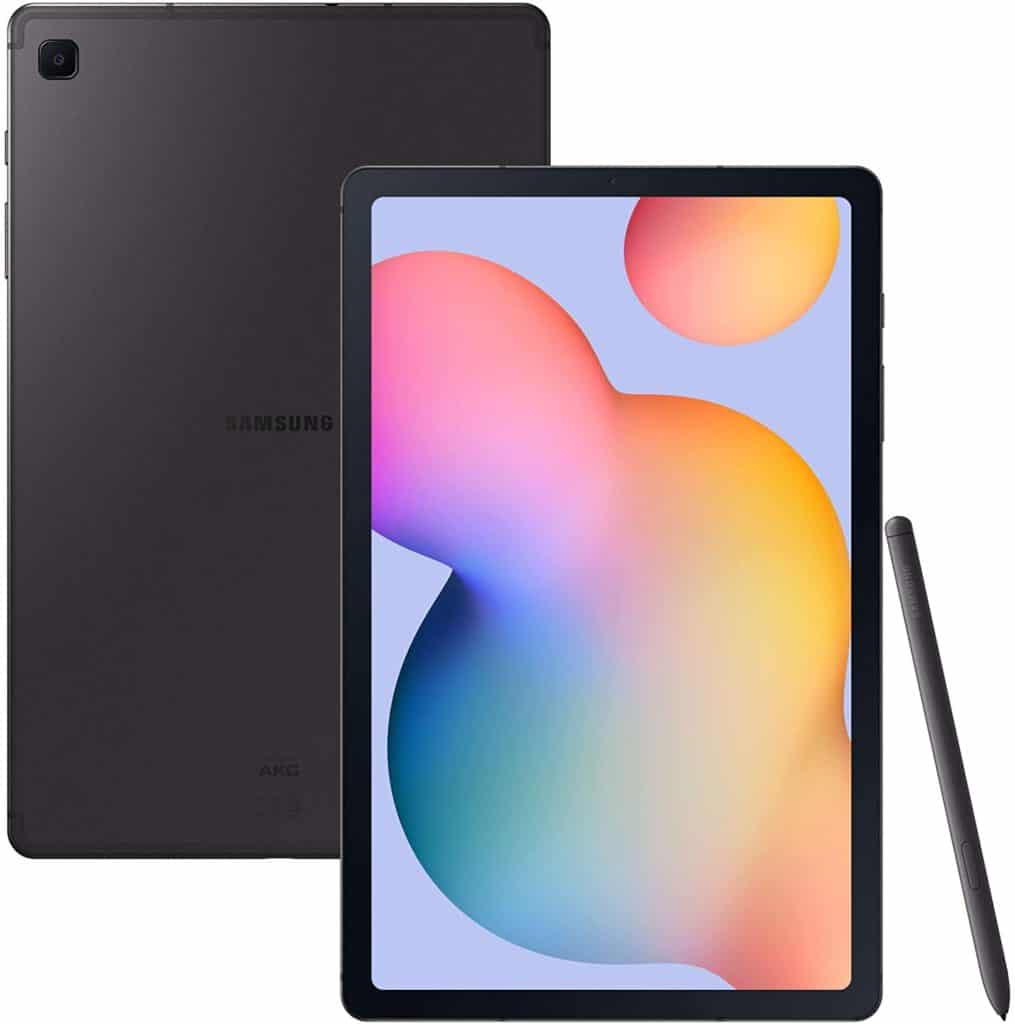
Price
As we mentioned earlier, both Samsung and Asus cater to different price segments falling under entry-level, mid-range, and flagship. You can get an Asus budget tablet under $200 and a Samsung budget tablet under $300. The mid-range Samsung and Asus tablets come under $600. The premium segment tablets by Samsung could go as far as under $1000.
Conclusion
As one could gauge from our Asus vs Samsung tablet comparison above, Samsung is a better brand for buying a tablet. But all is not lost for Asus. The brand has not left the tablet industry yet and is coming up with great 2-in-1 tablet + laptop hybrids that make heads turn.
To conclude, we would say that you should go for Samsung tablets if you want the Android ecosystem. If you’re in the mood for the best of both worlds and would prefer a Windows/Chrome OS tablet that can turn into a laptop as well, check out Asus.
We hope this Asus vs Samsung tablet comparison helps you distinguish between the two brands and their offerings. Let us know in the comments!

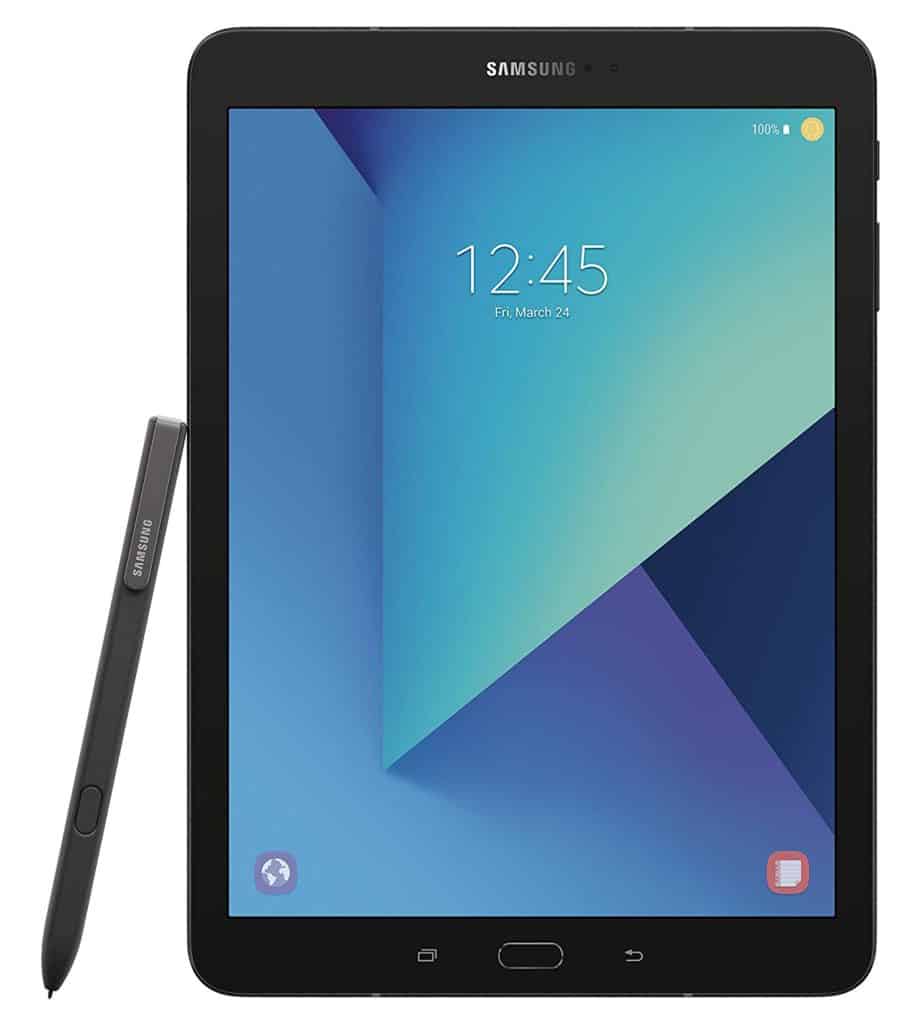
Leave a Reply